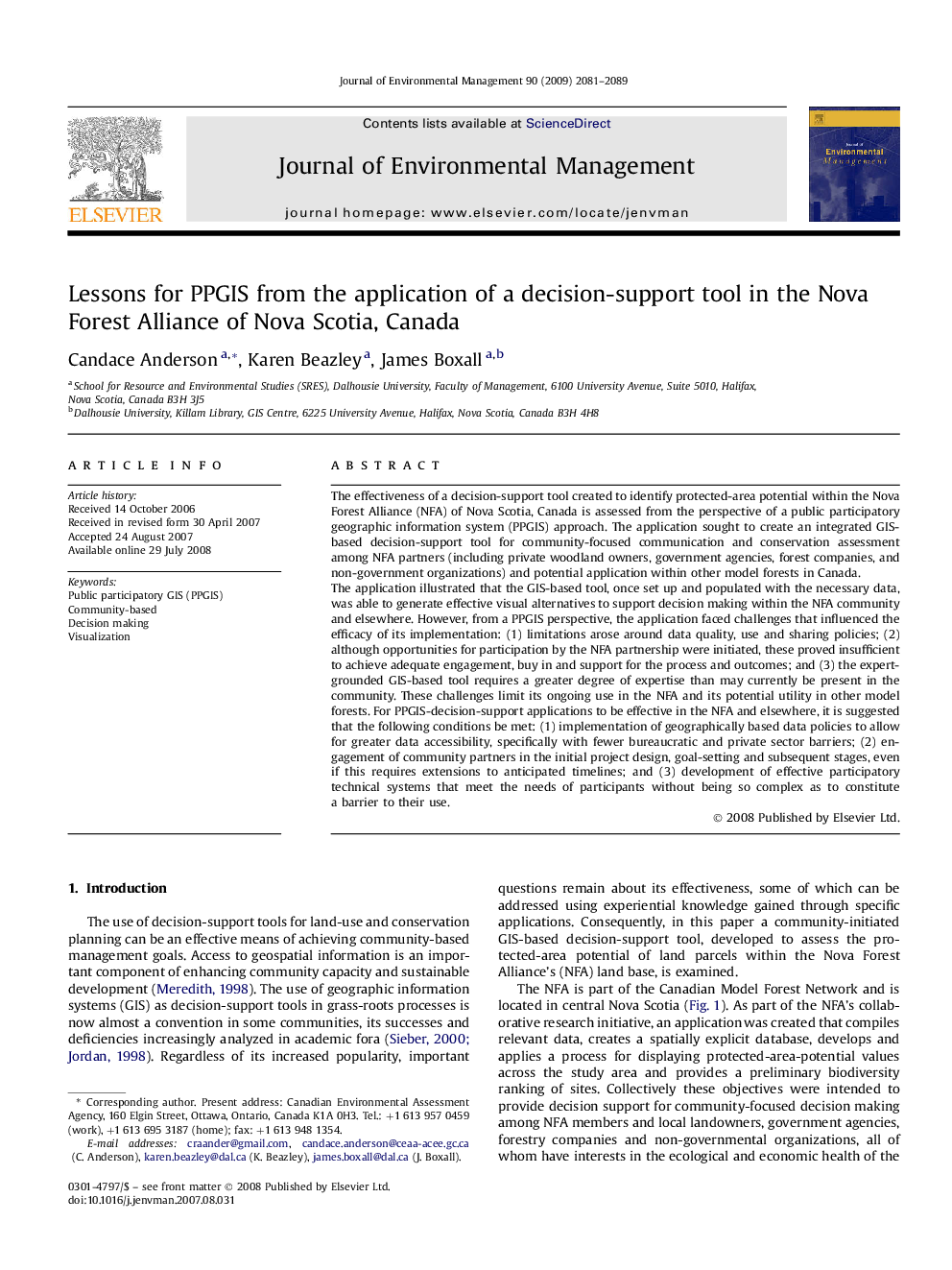| کد مقاله | کد نشریه | سال انتشار | مقاله انگلیسی | نسخه تمام متن |
|---|---|---|---|---|
| 1058249 | 947113 | 2009 | 9 صفحه PDF | دانلود رایگان |

The effectiveness of a decision-support tool created to identify protected-area potential within the Nova Forest Alliance (NFA) of Nova Scotia, Canada is assessed from the perspective of a public participatory geographic information system (PPGIS) approach. The application sought to create an integrated GIS-based decision-support tool for community-focused communication and conservation assessment among NFA partners (including private woodland owners, government agencies, forest companies, and non-government organizations) and potential application within other model forests in Canada.The application illustrated that the GIS-based tool, once set up and populated with the necessary data, was able to generate effective visual alternatives to support decision making within the NFA community and elsewhere. However, from a PPGIS perspective, the application faced challenges that influenced the efficacy of its implementation: (1) limitations arose around data quality, use and sharing policies; (2) although opportunities for participation by the NFA partnership were initiated, these proved insufficient to achieve adequate engagement, buy in and support for the process and outcomes; and (3) the expert-grounded GIS-based tool requires a greater degree of expertise than may currently be present in the community. These challenges limit its ongoing use in the NFA and its potential utility in other model forests. For PPGIS-decision-support applications to be effective in the NFA and elsewhere, it is suggested that the following conditions be met: (1) implementation of geographically based data policies to allow for greater data accessibility, specifically with fewer bureaucratic and private sector barriers; (2) engagement of community partners in the initial project design, goal-setting and subsequent stages, even if this requires extensions to anticipated timelines; and (3) development of effective participatory technical systems that meet the needs of participants without being so complex as to constitute a barrier to their use.
Journal: Journal of Environmental Management - Volume 90, Issue 6, May 2009, Pages 2081–2089